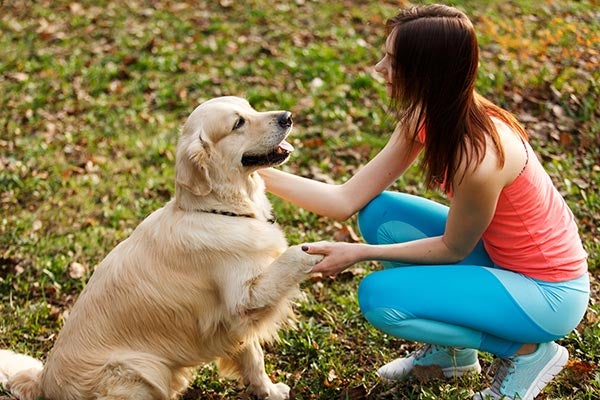Typical Behavioral Issues and Their Solutions in Dog Training
Typical Behavioral Issues and Their Solutions in Dog Training
Blog Article
Essential Tips for Successful Dog Training: A Guide for Pet Dog Owners
Reliable dog training is a complex process that requires a tactical approach customized to both the family pet's character and the owner's goals. Comprehending just how to navigate these challenges can significantly enhance the training experience, inevitably changing the connection between proprietor and dog.
Recognizing Canine Behavior
Comprehending pet actions is crucial for reliable training and fostering an unified connection between canines and their owners. Canines connect mainly through body language, vocalizations, and actions, making it crucial for proprietors to interpret these signals precisely. Identifying a dog's posture, tail position, and ear orientation can supply insights right into its mood. A wagging tail does not always show happiness; it can also indicate enjoyment or anxiety.

Socialization plays a significant function in pet dog actions; direct exposure to different atmospheres, individuals, and other animals can dramatically impact a canine's character. In addition, aspects such as breed characteristics and specific character need to lead training techniques, as some breeds may have specific behavior characteristics that require tailored methods. By comprehending these elements, proprietors can produce a helpful atmosphere that encourages favorable habits, bring about effective training outcomes and a much deeper bond with their pets.
Developing Regular Commands
Reliable communication with your dog starts with establishing consistent commands. This foundational aspect of training is critical for cultivating understanding between you and your family pet. Consistency in the commands you make use of makes certain that your dog can accurately link certain words or phrases with the desired behaviors.
When choosing commands, choose clear, distinctive words that are easy to differentiate and claim from each other. Stay clear of using similar-sounding commands that may confuse your pet. For example, using "sit" and "remain" is suitable, however "sit" and "struck" can lead to misconceptions.
Furthermore, keep the same tone and volume for each command. Dogs are delicate to singing hints, so varying your tone can develop confusion.
It is just as essential to make sure that all member of the family are on the very same web page pertaining to the commands utilized. A united front in command usage will protect against blended signals and reinforce the knowing procedure.
Favorable Support Methods
The power of favorable support in pet training depends on its ability to encourage wanted habits via benefits and praise. This strategy is based in the principle that behaviors complied with by positive end results are a lot more most likely to be duplicated. By including favorable reinforcement into your training regimen, you can effectively shape your pet's habits in a positive way.
To implement positive support, it's vital to recognize what inspires your canine, whether it be treats, playthings, or spoken appreciation. When your dog carries out a preferred activity, such as sitting on command, immediately compensate them with a treat or love. This association between the command and the favorable result strengthens their understanding.
It's vital to timing the rewards appropriately; providing the support within seconds of the preferred actions aids your pet dog make the link (dog training). Additionally, consistency is vital-- guarantee that all relative use the exact same commands and incentive systems to avoid complication

Gradually, you can minimize the regularity of treats as your pet dog finds out the behavior, transitioning to praise or periodic benefits. This technique not just fosters a strong bond between you and your canine however additionally promotes a positive knowing find more atmosphere, making educating a delightful experience for both.
Socialization and Interaction
Regularly subjecting your dog to a variety of environments, people, and other animals is important for their social advancement. Socializing must begin early, ideally throughout the critical home window of 3 to 14 weeks, when young puppies are most receptive to new experiences. However, older dogs can likewise gain from ongoing socializing initiatives.
Present your pet dog to various setups, such as parks, pet-friendly shops, and metropolitan areas. This exposure helps them adjust to numerous stimulations, lowering anxiousness and concern actions. Urge positive interactions with other pets and individuals, making certain that these experiences are regulated and risk-free to promote self-confidence.
Utilize organized playdates with genteel canines, as this can enhance your pet's social skills and teach them proper behavior. Obedience classes and training sessions additionally provide outstanding possibilities for socializing, permitting your pet to interact with others in a supervised setting.
Monitor your pet dog's body language during communications, as this will assist you evaluate their comfort level. Slowly boost direct exposure to more challenging situations while making sure that each experience is favorable. A well-socialized pet is most likely to display balanced actions, making them a pleasure to have why not find out more in any type of setup.
Dealing With Typical Training Challenges
Every pet dog owner will run into training difficulties at some time, despite their pet's age or socializing level. Recognizing usual issues such as stubbornness, diversions, and fearfulness can help in developing reliable approaches for improvement.

Slowly introduce disturbances as the pet ends up being a lot more skillful in commands. Short, frequent training sessions are likewise efficient in preserving focus.
Terror can impede a dog's learning procedure. Gradual desensitization to the source of anxiety, paired with favorable reinforcement, can help reduce stress and anxiety. Perseverance is vital; never ever force a pet right into a situation that causes distress, as this may intensify the issue.
Inevitably, understanding and dealing with these typical challenges with an organized method will promote a much more efficient training experience, enhancing the bond in between pet and proprietor while promoting efficient discovering.
Final Thought
In recap, successful pet dog training relies on a detailed understanding of canine habits, the facility of regular commands, and the application of favorable support methods. Socializing plays an essential duty in developing well-adjusted family pets, while attending to typical training obstacles needs patience and adaptability. By executing these essential strategies, pet owners can promote a strong bond with their dogs and promote desirable habits, eventually causing a harmonious partnership between people and their canine buddies.
Comprehending pet dog habits is important for effective training and promoting an unified partnership in between pooches and their owners.Socializing plays a substantial role in pet dog habits; exposure to various environments, people, and various other pets can dramatically this website affect a pet's temperament.The power of favorable reinforcement in pet training exists in its ability to urge wanted actions via incentives and praise. By including positive reinforcement into your training regimen, you can properly shape your pet dog's actions in a constructive fashion.
In recap, successful dog training counts on a comprehensive understanding of canine actions, the establishment of consistent commands, and the application of favorable reinforcement methods.
Report this page